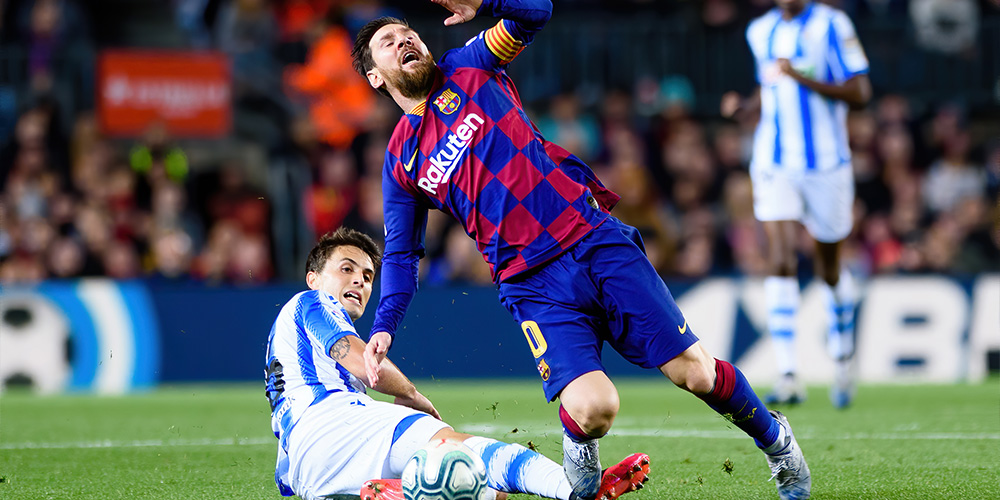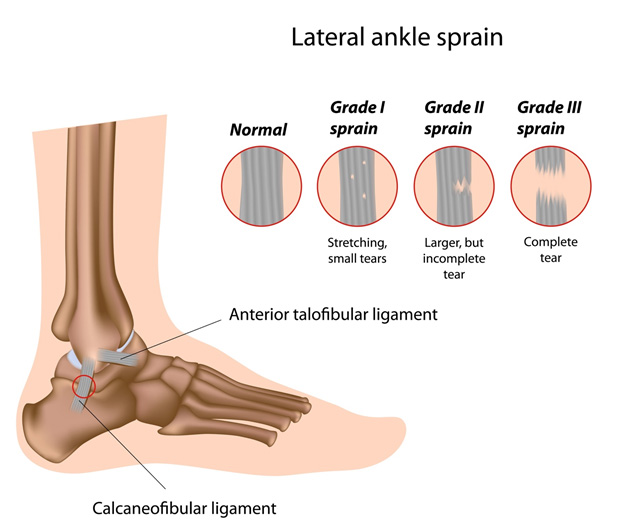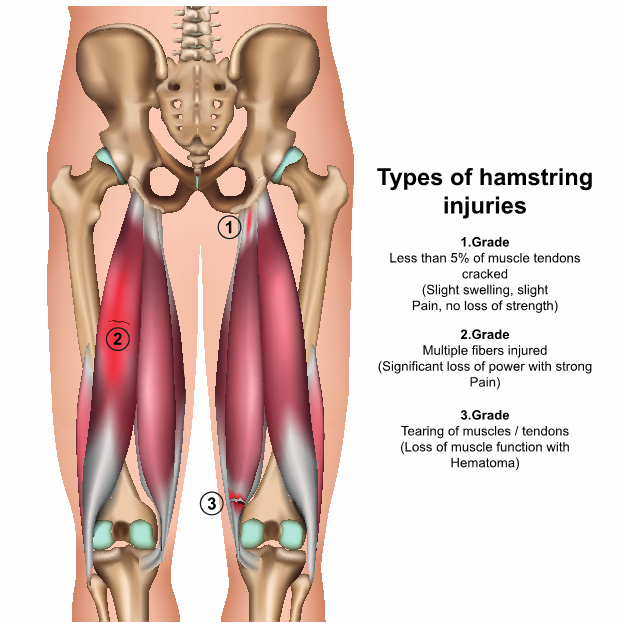
5 Most Common Injuries In Soccer. What You Need To Know
Wednesday, July 8, 2020
According to the NCAA, 65.6% of soccer injuries occur in the lower limbs, which makes sense since soccer is all about running, kicking, and jumping. Here, we're going over the 5 most common injuries in soccer and what usually causes them.
Most Common Injuries in Soccer
Ankle Sprain
An ankle sprain occurs when the muscles and tendons around your ankle become strained as a result of a sudden movement in the “wrong” direction or instability surrounding the ankle.
Ankle sprains can often happen in soccer when the field isn't properly maintained. For example, you're running, you step into a pothole, and you sprain your ankle. Without a solid field to play on, you're more at risk of ankle instability and can easily sprain your ankle.
Below are the types of ankle sprains.

Hamstring Strains
Hamstring strains are another common injury in soccer. Your hamstring is a major muscle group in the back of your thigh and is often a result of not properly warming up.
A tight hamstring is less forgiving than a flexible one that's warm and ready to work. So, if you're running, kicking, and jumping before your hamstring is loosened and prepared for play, it can easily become strained from a sudden movement, which, if you're playing soccer, is bound to be the case.
Below are the types of hamstrings injuries.

ACL Injuries
ACL stands for anterior cruciate ligament and it's one of the key ligaments that stabilise your knee joint. The ACL connects your thigh bone to the shinbone and it's common to injure your ACL in sports that require sudden stops and changes in direction, such as soccer.
Unfortunately, an ACL tear is one of the worst injuries you can sustain in soccer and you'll likely be out for the rest of the season with a recovery time of up to 18 months.
Groin Injuries
Your groin is associated with your hip muscles. It's the point where your abs end and your leg begins. With so much kicking and running involved in soccer, it makes sense that groin injuries are incredibly common within the sport.
Similar to hamstring injuries, they're often caused by not completing a proper warm-up before play.
External Traumatic Injuries
Aside from the strains and tears mentioned above, another set of common soccer injuries are external traumatic injuries - in other words, broken bones. Again, with soccer, these tend to occur in the lower limbs since the game makes your legs the most susceptible to injury.
Therefore, broken ankles, shin bones, and traumatic knee injuries are unfortunately common.
Other injuries that might occur during soccer games include:
- Upper limb injuries such as a broken arm or collar bone
- Head, neck, and face injuries due to collisions
- Back-related injuries
- Overuse injuries that occur by not taking the proper time off to recover
- Heat-related injuries, especially if you play in climates characterised by extreme heat
Treatment of Soccer Injuries
Treatment of soccer injuries will vary depending on the issue. Muscular injuries often require rest and rehabilitation. Sometimes, you'll need surgery to repair a muscle or tendon tear, but your doctor will generally suggest working with a physiotherapist to treat the injury.
Broken bones and other traumatic injuries need to be treated by a medical professional. These injuries might also require surgery and you'll need to wear a cast before attempting to rehabilitate the area.
More often than not, you'll need to take time away from soccer to fully recover and it's highly recommended that you work with a physiotherapist that can put together a personalised treatment plan.
How to Prevent Soccer Injuries
They say the best defence is a good offence. After working with your physiotherapist to recover from a soccer injury, their next suggestion will be to take preventative measures against future soccer injuries. Here are some tactics.
Prepare for Play
- Maintain fitness. In the off-season, be sure to stay fit and in good physical condition to avoid injuries.
- Warm-up. We briefly mentioned it before, but if we're talking about how to prevent hamstring injuries in soccer, for example, the key is to always warm up.
- Cool down and stretch. Stretching after a game helps your muscles stay flexible. Flexible muscles are more forgiving and have fewer injuries.
- Stay hydrated. Even low levels of dehydration can negatively affect physical performance so make sure you're drinking water and electrolytes before, during, and after play.
Ensure You're Using the Proper Equipment
- Wear shin guards. Soccer tournament records show that most lower leg injuries are due to inadequate shin guards.
- Wear boots with moulded cleats or that have ribbed soles. Boots with screw-in cleats have been shown to cause more injuries unless you're playing on a wet field.
- On a wet field, use synthetic, non-absorbent soccer balls. Traditional leather balls get heavier when wet, increasing the likelihood of player injuries.
Ensure a Safe Environment
- Be sure the field is maintained and kept in good condition. As mentioned above, it's easier to sprain your ankle, for example, if the field you're playing on is poorly maintained. Holes, bare spots, and debris should always be removed before play.
- Avoid playing in poor weather conditions. Playing on a wet field increases the risk of injury. It also becomes especially important to increase your hydration in severely hot weather.
Prepare for Injuries
- Have a plan for emergencies. Coaches should know first aid procedures and have the ability to treat minor injuries. Coaches and other personnel should know who to call and what to do if a more serious emergency occurs.
Ensure a Safe Return to Play
- Be sure a player's injuries have fully recovered before returning to play. When it comes to joint problems, there should be no swelling, full range of motion, and normal strength. If a concussion has occurred, the player must be symptom-free and cleared by a medical doctor before returning to the field.
Prevent Overuse Injuries
Soccer players often experience overuse injuries since they're generally training in only that sport without dabbling in other forms of exercise.
- For kids, avoid signing them up to play for more than one team.
- Take regular breaks from soccer and consider playing other sports in the off-season.
- Develop a hamstring conditioning program.
Have you recently experienced a soccer injury? Are you looking to rehabilitate and get back in the game? Book an appointment with one of our expert physiotherapists. Come see us at one of our convenient locations throughout Australia. Or, let our mobile physio services come to you!
Other useful resources
FIFA 11+ Program. Soccer injury prevention.
Is cardio more important than strength in soccer?
This article was originally written by Jonathan Moody from Physio Inq

